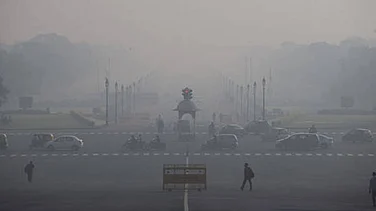In his first speech as the Leader of the Opposition in the Parliament on July 1, 2024, Rahul Gandhi brought out an image of Lord Shiva to set the tone of the narrative that was to unfold in the rest of his speech. While showing the image on camera in the Parliament in itself became “controversial” over the course of Gandhi’s speech, what he set out to do with the depiction of the deity raised even more fury from the BJP members and their allies in the House.
Why the image of Lord Shiva in the Parliament?
In Gandhi’s own words, the Hindu deity’s image was shown to represent “the ideas that the Opposition used to defend the idea of India and to fearlessly counter any onslaught that was faced by members of the opposition while confronting the regime”. The snake on the deity’s neck, he stated, represented the need to tackle one’s own fear- a motivation that drove the opposition to fight the BJP-RSS regime during the Lok Sabha elections. The trishul or the trident, Lord Shiva’s symbolic weapon, represented non-violence through its positioning behind the deity’s left shoulder in the depiction. Gandhi claimed that when the Opposition fought for truth in the elections, they carried their message across the country with this non-violence in their campaign to the people of India.
The third symbolism which Gandhi spoke about was the Abhaya Mudra or the outward facing raised palm in the image of Lord Shiva that is also the Congress Party’s election symbol. The Abhaya Mudra, according to him, became the guiding principle of the Opposition’s campaign as it came to communicate that it was not enough for oneself to simply be fearless and stand for truth, but that fearlessness also had to be promoted among others around, alongside the principle of non-violence. This invocation became the driving force of the rest of his speech, as he went on to point out the myriad ways in which the BJP-RSS regime had simply sold fear and lies as a “package” to the people of the country, including soldiers, farmers, women, students, Dalits, Adivasis and minorities.
What is the Abhaya Mudra?
The Abhaya Mudra has existed as a symbol of fearlessness and peace in ancient sculptures and representations of almost all the religions that are practiced in South Asia. References to this symbol are present particularly in Buddhism, where there are mythological tales about how Lord Buddha’s Abhaya Mudra promoted peace and absence of fear even in dangerous situations. The raised palm facing outward is seen in the mythological representations and sculptures of several Hindu deities including Lord Shiva, as well as in Christianity through images of Jesus Christ and in Sikhism through the artistic imagination of Guru Nanak. Gandhi expanded the interpretation of this imagery even to Islam, where he claimed that the posture of worship in the ritual practice of Muslims was also similar to this symbolism.
Why speak of Lord Shiva and the Abhaya Mudra?
Gandhi’s invocation of the Hindu deity was meant to counter the majoritarian and violent image of the religion that has been established by the right-wing, and posit a non-violent and peaceful image in its stead, which is meant to promote courage and truth. Gandhi minced no words in stating to the House that the BJP and RSS did not represent the entire Hindu Samaj (community), nor were they the thekedaars (owners/overlords) of the religion. Thus, a criticism of the ruling party’s ways and methods could not be taken as a criticism of the religion itself.
The second purpose of the design of his speech has been to put all the religious communities at par with each other, in opposition to what the ruling regime’s strategy has been vis-à-vis their policies and their activities. This has been an important bid to consolidate the trust of the religious minorities of the country, who have not only been demonized by the BJP-RSS through statements calling them “terrorists”, but have also been persecuted through policy and legislative decisions.

















